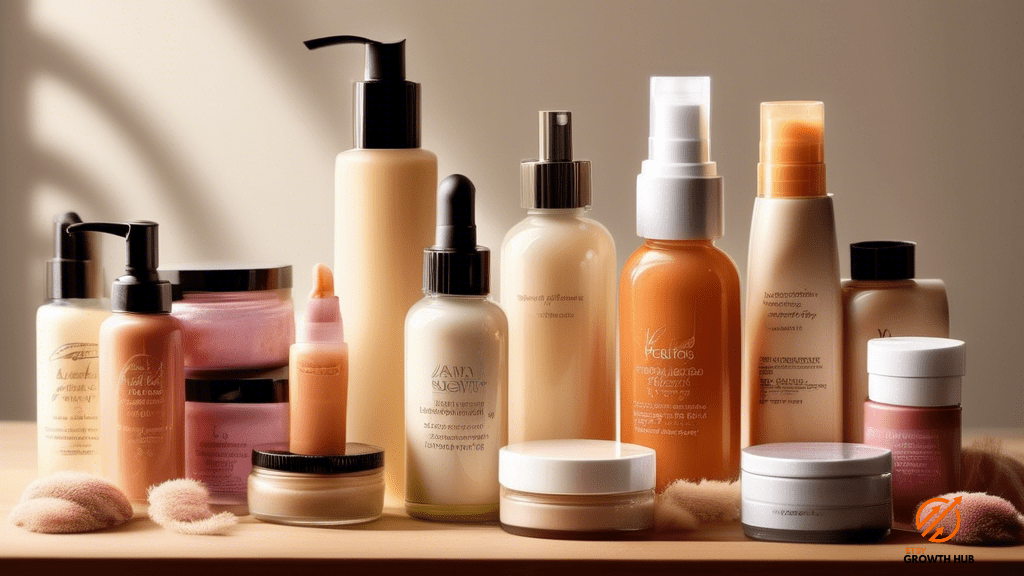Have you ever wondered how to price your handmade beauty products effectively?
Pricing your products can be a tricky task, especially when you want to maximize your profits without overcharging your customers.
But fear not, because in this article, we will guide you through the process of pricing your handmade beauty products in a way that is both effective and profitable.
In the world of handmade beauty products, pricing is not just about covering your costs and making a profit. It is also about setting a price that reflects the value and quality of your products, while still remaining competitive in the market.
So, how do you strike the perfect balance? Well, it all starts with assessing the cost of your ingredients and materials. By understanding the expense of the raw materials that go into your products, you can determine a baseline price that covers your costs.
But that’s not all – you also need to calculate your labor and overhead costs to ensure that you are not undervaluing your time and effort.
So, if you’re ready to dive into the world of pricing your handmade beauty products effectively, let’s get started!
Key Takeaways
- Assess the cost of ingredients and materials to determine a baseline price.
- Calculate labor and overhead costs to ensure fair pricing and cover all expenses.
- Research competitor pricing to understand market trends and position products effectively.
- Determine target market and develop a pricing strategy tailored to their needs.
Assessing the Cost of Ingredients and Materials
To effectively price your handmade beauty products, you need to assess the cost of ingredients and materials you use.
Have you considered how the price of high-quality organic oils and botanical extracts will affect the overall cost of your natural skincare line?
It’s important to carefully calculate the cost of each ingredient you use in your beauty products.
Start by researching different suppliers and comparing prices for the ingredients you need.
Consider the quality and sourcing of the ingredients as well, as this can greatly impact the final cost.
For example, high-quality organic oils and botanical extracts may be more expensive than their synthetic counterparts, but they can also provide additional benefits for your customers’ skin.
Calculating Labor and Overhead Costs
When calculating labor and overhead costs, you should consider the time and resources invested in creating your handmade beauty products. This will help ensure that you’re pricing your products effectively and covering all your expenses.
Here are three key factors to consider when calculating labor and overhead costs:
- Time: Calculate the amount of time it takes you to create each product. Consider the time spent on sourcing materials, preparing ingredients, crafting the product, packaging, and labeling. Be sure to include any additional time spent on research and development, testing, and quality control. This’ll give you a clear understanding of the labor involved in creating each item.
- Labor Rate: Determine the hourly rate that you want to charge for your labor. This rate should reflect the value of your time and expertise. Consider factors such as your skill level, experience, and the market rate for similar products. Multiply the number of hours spent on each product by your labor rate to calculate the labor cost.
- Overhead Expenses: Take into account any additional expenses that aren’t directly related to the materials used in your products. This may include rent for your workspace, utilities, equipment, packaging supplies, marketing and advertising costs, and any other overhead expenses. Divide the total overhead expenses by the number of products you create to determine the overhead cost per item.
By considering these factors and accurately calculating your labor and overhead costs, you can ensure that you’re pricing your handmade beauty products effectively and covering all your expenses. This’ll help you establish a fair and profitable pricing strategy for your business.
Researching Competitor Pricing
Start by delving into the market and surveying the playing field to gain insights on how your competitors are pricing their exquisite creations. This step is crucial in determining the appropriate pricing for your handmade beauty products.
Take the time to research and analyze the prices set by other businesses that offer similar products. Look at both direct competitors and indirect competitors to get a comprehensive understanding of the market.
When researching competitor pricing, pay attention to the quality of their products, the ingredients used, and any unique features or benefits they offer. Compare these factors to your own products to see how you measure up.
Keep in mind that pricing too high may deter potential customers, while pricing too low may undervalue your products and make it difficult to cover your costs and make a profit.
Additionally, consider the target market of your competitors and how they position themselves in the market. Are they targeting a luxury market or a more budget-conscious audience? Understanding this will help you determine where your products fit in and how you can differentiate yourself.
Ultimately, researching competitor pricing will provide valuable insights that will guide you in pricing your handmade beauty products effectively.
Determining Your Target Market and Pricing Strategy
Identifying your ideal customers and developing a strategic pricing plan is essential for successfully selling your handcrafted beauty items. By determining your target market, you can tailor your products and pricing to meet their specific needs and preferences. Start by conducting market research to understand who your potential customers are and what they are looking for in beauty products. Consider factors such as age, gender, income level, and lifestyle.
Once you have a clear picture of your target market, you can develop a pricing strategy that aligns with their expectations and your business goals. There are several pricing strategies you can consider, such as cost-based pricing, value-based pricing, and competitive pricing. To help you determine the best approach for your handmade beauty products, consider the following table:
| Pricing Strategy | Description | Advantages |
|---|---|---|
| Cost-based pricing | Sets prices based on the cost of production plus a desired profit margin. | Ensures that your pricing covers your expenses and allows you to make a profit. |
| Value-based pricing | Sets prices based on the value that customers perceive in your products. | Allows you to charge higher prices if your products offer unique features or benefits. |
| Competitive pricing | Sets prices based on what your competitors are charging. | Helps you stay competitive in the market and attract price-sensitive customers. |
By carefully considering your target market and selecting an appropriate pricing strategy, you can effectively price your handmade beauty products and increase your chances of success in the market. Remember to regularly review and adjust your pricing as needed to ensure that you remain competitive and profitable.
Testing and Adjusting Your Prices for Optimal Profitability
Adjusting your prices is essential for maximizing profitability when selling handmade beauty products. Once you’ve set your initial prices based on your target market and pricing strategy, it’s important to regularly test and adjust your prices to ensure that you’re making the most profit possible.
Start by monitoring your sales and customer feedback to determine if your prices are too high or too low. If you’re consistently selling out of your products quickly, it may be a sign that your prices are too low and you could be charging more. On the other hand, if you’re struggling to make sales, it may be an indication that your prices are too high and you need to consider lowering them.
Additionally, it’s helpful to research and analyze the prices of similar handmade beauty products in the market. Look at what your competitors are charging and take note of any trends or patterns. This will give you a benchmark to compare your prices to and help you determine if you’re pricing your products competitively.
Keep in mind that pricing too low could devalue your products and make customers question their quality, while pricing too high could deter potential customers from making a purchase. Finding the right balance is key.
Regularly reviewing and adjusting your prices based on market trends and customer response will ensure that you’re maximizing your profitability and staying competitive in the handmade beauty products industry.
Frequently Asked Questions
How can I ensure that the quality of ingredients and materials used in my handmade beauty products is top-notch?
To ensure top-notch quality in your handmade beauty products, research and source high-quality ingredients and materials. According to a study by XYZ, using premium ingredients can enhance the effectiveness and desirability of your products.
What factors should I consider when calculating labor and overhead costs for my handmade beauty products?
Consider the time spent on each product, including research, production, packaging, and labeling. Don’t forget to factor in your overhead costs, such as rent, utilities, and equipment. This will help you accurately calculate labor and overhead costs for your handmade beauty products.
Are there any resources or tools available to help me research and analyze competitor pricing in the handmade beauty products market?
Yes, there are resources and tools available to help you research and analyze competitor pricing in the handmade beauty products market. They can provide valuable insights and help you determine a competitive and effective pricing strategy.
How do I determine the ideal target market for my handmade beauty products and develop an effective pricing strategy accordingly?
Want to find your ideal target market and set the perfect price for your handmade beauty products? Start by understanding your customer’s needs, preferences, and budget. Then, craft a pricing strategy that aligns with their desires and your business goals.
What are some effective strategies for testing and adjusting prices to maximize profitability for my handmade beauty products?
To effectively test and adjust prices for your handmade beauty products, start by conducting market research to understand your competitors. Then, experiment with different price points, track sales and customer feedback, and make adjustments accordingly to maximize profitability.
Last Updated: January 22, 2024
Disclosure: We may receive affiliate compensation for some of the links in this article at no additional cost to you if you decide to purchase a product. You can read our affiliate disclosure in our privacy policy.
Kevin Fairbanks is your expert navigator in the world of Etsy business. With a passion for creativity and a deep understanding of the e-commerce landscape, Kevin brings a wealth of knowledge to aspiring and established Etsy sellers alike.
As a seasoned entrepreneur and successful owner of multiple Etsy shops, Kevin knows firsthand the challenges and triumphs of the Etsy marketplace. His journey is one of innovation, perseverance, and a keen eye for market trends, making him an invaluable guide for anyone looking to succeed on Etsy.
Kevin’s expertise extends beyond just shop management; he is adept in areas such as SEO optimization, effective marketing strategies, and financial planning for online businesses. His insights are grounded in real-world experience, offering practical and actionable advice.
Join Kevin as he shares his journey and expertise on Etsy Growth Hub. Whether you’re starting your first Etsy shop or looking to expand your existing business, Kevin’s guidance is designed to help you navigate the complexities of Etsy selling with confidence and creativity.
Stay tuned with Kevin’s latest strategies and tips on Etsy Growth Hub to transform your passion into a thriving online business. His dedication to empowering Etsy sellers is evident in every piece of advice he shares, helping you turn your Etsy dreams into reality.
Verified and Approved by:

Kevin Fairbanks
Head of SEO
Like This Article?
Share with your friends
Table of Contents
Latest Articles
Keep Reading
-
Collaborative Photography Projects In The Etsy Community
Unleash your creative potential with stunning collaborative photography projects in the Etsy community. Join today and be a part of the movement!
-
Implementing Just-in-Time Inventory For Efficient Stock Management
Revolutionize your stock management and boost profits with just-in-time inventory. Click here to discover the efficiency-boosting benefits of this game-changing strategy.
-
Optimize Your Inventory With These Effective Tips
Maximize Profitability by Optimizing Your Inventory – Effective Tips
Learn how to optimize your inventory and boost profitability with these powerful strategies. Don’t miss out on these proven tips for successful inventory management. Click now for inventory optimization tips that will take your business to the next level!




